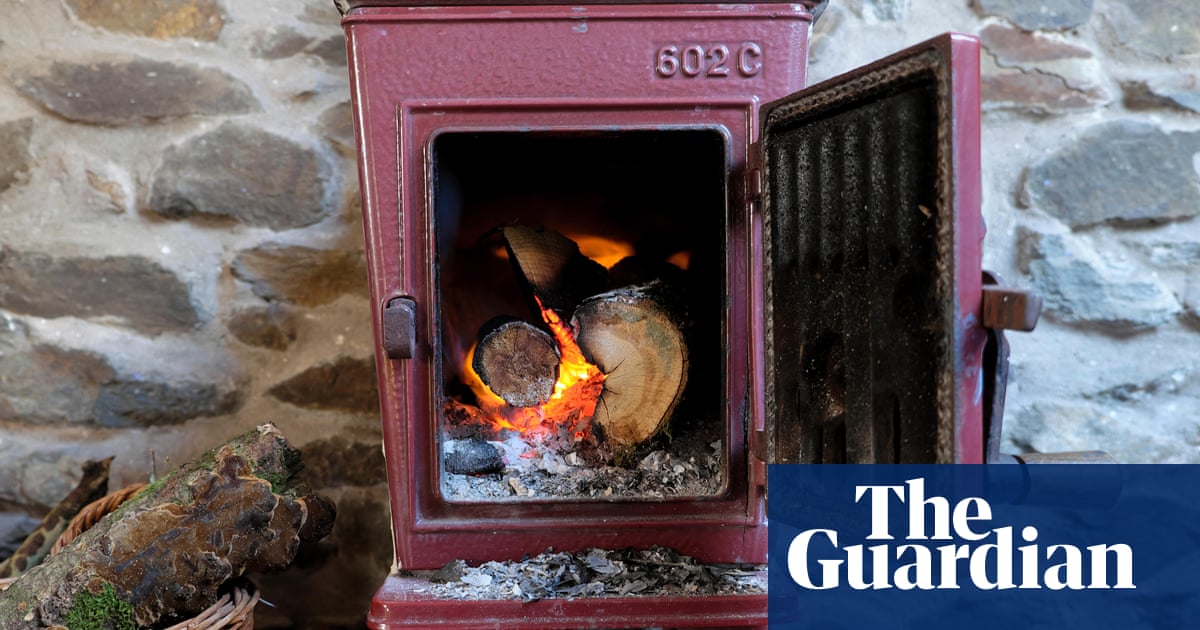
A rise in harmful emissions from wood-burning stoves has largely offset decreases in particulate pollution from road and energy sources in the UK, government data reveals.
Emissions of PM2.5 and PM10 from domestic combustion – heating homes using solid fuel such as wood – increased by 19% between 2012 and 2022, counteracting efforts made to travel and produce commercial energy in less polluting ways.
Government statisticians said: “This reflects the greater popularity of solid fuel appliances in the home such as wood-burning stoves.”
Despite the environmental menace caused by wood-burning stoves, they are soaring in popularity, partly because of their “cosy” appearance, which has become increasingly fashionable. According to figures from the Stoves Industry Alliance, sales were up by 67% in the last three months of 2022 compared with the previous year. SIA says an estimated 1.5m homes in the UK have one.
PM2.5 particles are those which are less than 2.5 micrometres in diameter, which is small enough to make its way into the human lung. According to a growing body of research, they are responsible for a wide range of health problems. These include heart and lung disease, as well as diabetes, cancer, brain function and premature births.
It is estimated that they lead to the early death of more than 400,000 people across Europe each year. Last year, a study from Prof Chris Whitty, the chief medical officer for England, found that even “eco design” wood-burning stoves produced 450 times more toxic air pollution than gas central heating, while older stoves, now banned from sale, produced 3,700 times more.
Dr Gary Fuller, an air pollution scientist at Imperial College London, said: “Smoke from home fires feels like a problem from a Dickens novel but the rising popularity of solid fuel heating is slowing progress in cleaning our air and undermining the major investments in reducing air pollution from traffic and industry.
“Government advice is framed around burning the right fuels, such as dry wood, and manufacturers are encouraging the sale of less polluting stoves to solve the problem but we need to be clear in our messages: any use of solid fuel is the most polluting way to heat your home.
“The latest update from Defra points to successes in some areas but also that some sources of air pollution are being overlooked. These include burning solid fuels at home and also air pollution from farming. Ammonia lost from fertiliser and manure is polluting both our air and our rivers. There is a big opportunity to work with farmers to improve our environment and our health but they are rarely at the table when we talk about air pollution solutions.”
Home emissions are a large source of PM2.5; the statistics found that emissions from the domestic combustion of wood contributed 22% of emissions of the tiny particles.
Another growing source of it comes from the industrial combustion of biomass, statistics show. There has been recent anger at the government’s decision to offer the Drax power plant extra subsidies to burn trees for electricity.












